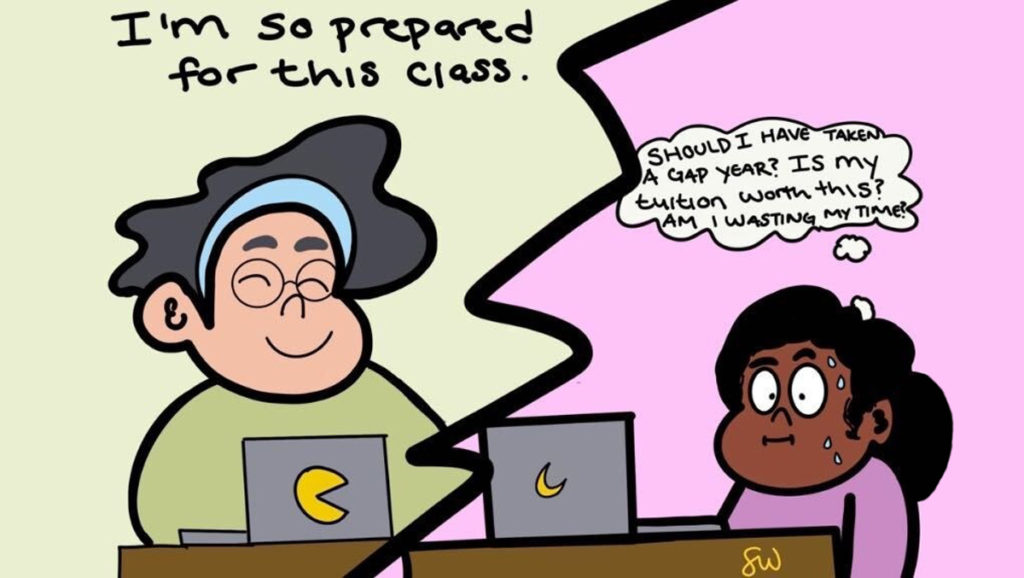Even with the painfully optimistic promises of an in-person return to Ithaca College in October, everyone knew in the back of their minds that there was a possibility of going remote again for the fall.
“I asked faculty to plan as if you were delivering your course online, and then take every face–to–face opportunity you have to be with students,” said La Jerne Cornish, provost and senior vice president for academic affairs, at the Faculty Council meeting in July. “So that, God forbid, we have to shut down again, you’ll be ready to pivot because you’ve already planned in an online format and supplement it with face to face.”
Sure enough, classes did pivot to remote instruction. Luckily, the college community had one thing on its side: time.
It is beneficial that the college has provided support to faculty members over the summer to prepare them for in-person, hybrid and online possibilities through its “Flexible by Design” program. There is no denying that the COVID-19 pandemic took the majority of the college community by surprise in the spring. Online instruction forced professors to exclude or completely change portions of their classes that were in person or hands on. This abrupt transition to online learning in the spring left faculty members scrambling to restructure their classes.
However, only approximately 260 professors took part in the “Flexible by Design” program; some faculty members may be more well-versed in these technologies and do not need the same level of professional development. But that could lead to some disconnect.
For instance, all students at the college are required to take AlcoholEdu, regardless of their knowledge of alcohol-related issues. The same standard can be applied to faculty in this circumstance. A collegewide, mandatory baseline for all faculty members would ensure that everyone is on the same page in at least some sense. Studies have shown that professional development is effective, but how useful can it be if not everyone is taking part?
The switch to remote learning made some students question if paying full tuition for online classes is worth it. However, students who are engaging in remote learning must keep in mind that committed faculty members — you’ll know who they are — are putting in the extra work to prepare. They are still teaching, even though the method of instruction has changed.
In the same vein, professors must be diligent in making sure that their classes are beneficial for students. Student engagement seems to be the biggest challenge at this time. Studies have shown that up to a quarter of students in a classroom are digitally distracted during normal times. This number can only certainly be higher when Twitter is just a click away from the Zoom browser. Professors will have to find ways to create community among their students. This may be in the form of breakout groups or assigning group work. At the same time, students need to make sure that they meet the professors halfway and actually engage with their efforts. Students also need to speak up if they feel like the level of instruction is not up to the highest standard, and professors need to be receptive to feedback.
Only time will tell if the preparation faculty had over the summer for classes this fall will be worthwhile, but it must be a team effort. Students must be patient with professors, even if classes do not run smoothly right away. The reality is we may be in virtual learning for the long haul. Overall, mutual empathy is important now more than ever.















